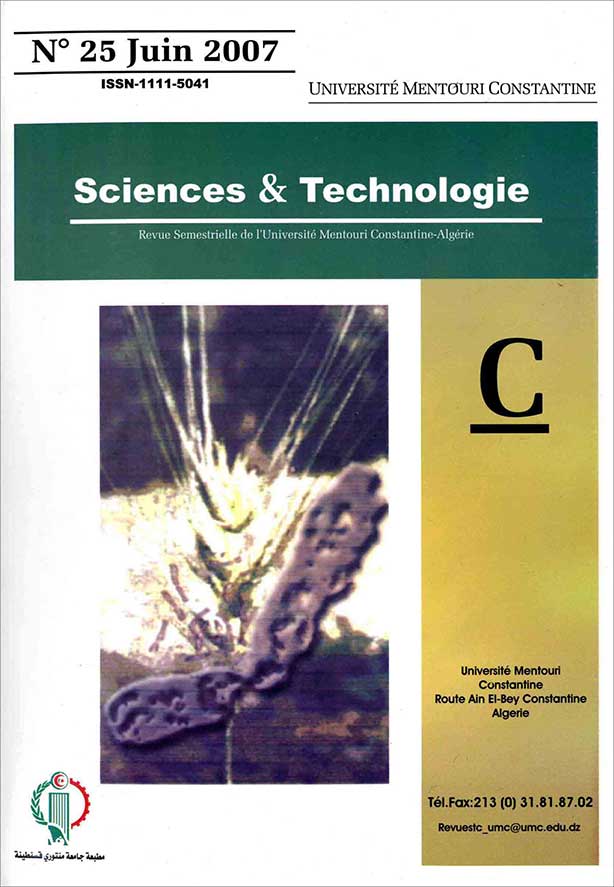EFFECT OF PHYTO-HORMONES 2,4-D AND KINITIN, APPLICATIONS ON ALKALOIDS ACCUMULATION IN Hyoscyamus albus L.
الكلمات المفتاحية:
Hyoscyamus albus L.، alkaloids، kinitin، 2، 4-D، accumulationالملخص
Hyoscyamus albus L. is a medicinal plant pertaining to Solanaceae familly, it is rich mainly in tropanic alkaloids such as atropine and scopolamine. Plants of this specie were grown under controlled conditions, irrigated to half field capacity and treated with hormones, kinهtin (K) and 2,4-dichlorophenoxyacetic acid (2,4-D), at 0, 10 and 20 mg/l rates to follow the kinetic of alkaloids accumulation in the aerial and root parts. The results showed that spreading hormones increased alkaloids accumulation by a threefold rate estimated to be 1.98% in the aerial parts and by a fourfold rate estimated to be 1.55% in the root parts. The checks accumulated 0.73% and 0.38% for the two hormones cited in that order. A synergetic effect was observed between both hormones at higher applied rates (20 mg/l) on the measured traits and accumulated alkaloids compared to their separated effect. Hyoscyamus albus L. contains 5 alkaloids in the aerial and 6 the root parts. Ethanol was foundto be the best solvent for the extraction of theses alkaloids.
المراجع
- Bonnier G. (1987). Plantes médicinales. Edition BELIN Paris 6éme P. 40-64.
- Davies P. J. (1990). The plant hormones : their role in plant growth and development. 24-477.
- Mazliak P. (1982). Physiologie végétale, Croissance et developpement, Hermann, Paris. 2, 15-88.
- Balbaa S. I., Hilal S. H. and Zaki A. Y. (1986). Medicinal plant constituent. Egyptian Dar-El-Kotob, 424-437.
- Paris R. R. ,Moyse H. (1971). Précis de matière médicinale. Libraires de l’académie de médicine 120.Boul. Saint-Germain. Paris. 64-81.
- Karniek C. R. and Saxena M. D. (1970). On the variability of alkaloid production in datura species planta Med. 18 (3), 266-269.
- Merillon J. M., Chenieux J. C. et Rideau M. (1983). Time cours of growth evolution of sugar –Nitrogen metabolism and accumulation of alkaloids in a cell suspension of C. roseus. Planta Medica. 47, 169-176.
- Parr A. J., Payne J. Eagles J., Chapman B. T., Robins R. J., Rhodes M. J. C.(1990) Variation in tropane alkaloid accumulation within the Solanaceae and strategies for exploitation.Phytochemistry, 29 :2545-2550.
- Bruneton J. (2001). Plantes toxiques végétaux dangereux pour l’homme et animaux. Edition TEC et DOC. 2 édition. P 495.
- Sauerwein M. Wink M. et Shimomura K. (1992). Influence of light and phytohormones on alkaloid production in tranformed root cultures of Hyosyamus albus .J. Plant Physiol.,140:147-1907
- Cary A.J., Lui W., Howell S.H. (1995). Cytokinin action is coupled to ethylene in its effects on the inhibition of root and rypocotyl elongation in Arabidopsis thaliana seedling plant physiol., 107: 1075-1082.
- Mann J. (1996). Secondary metabolism. Oxford chemistry series, Clarenda press, oxford:322 pp.

